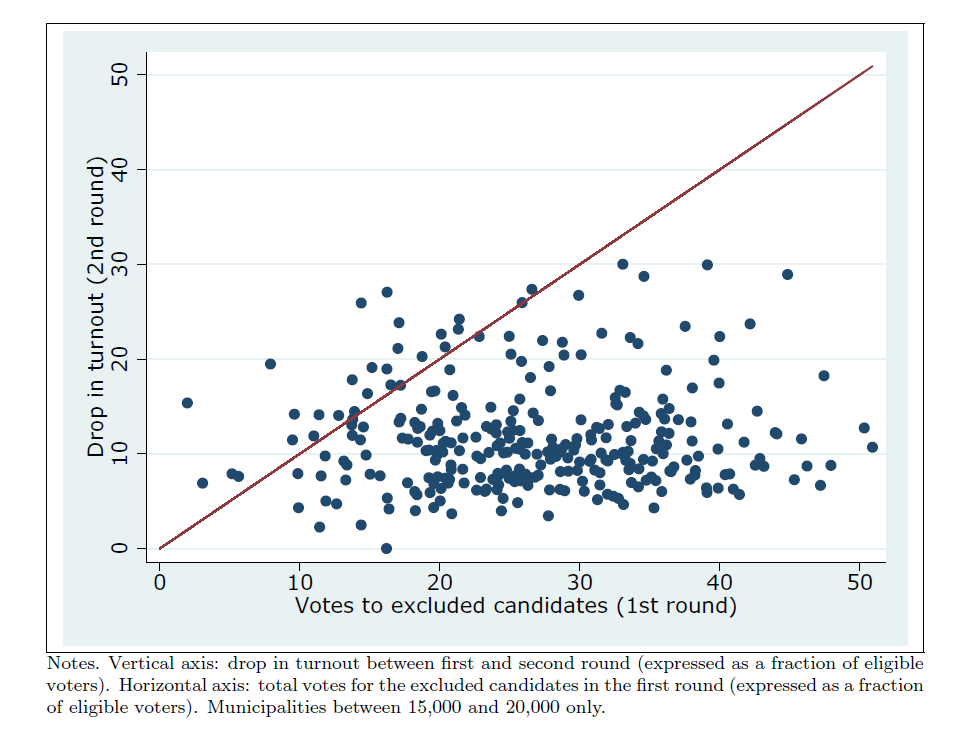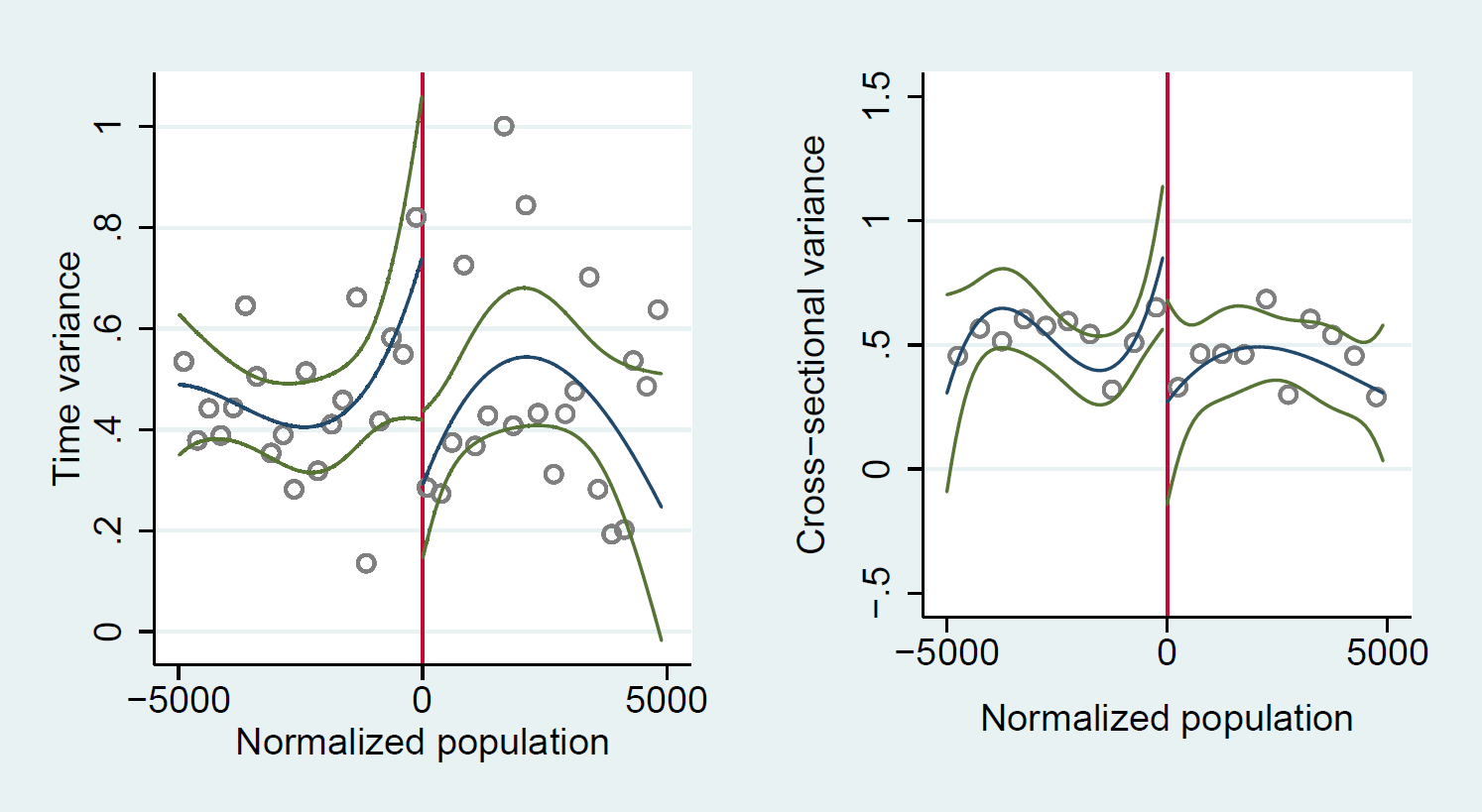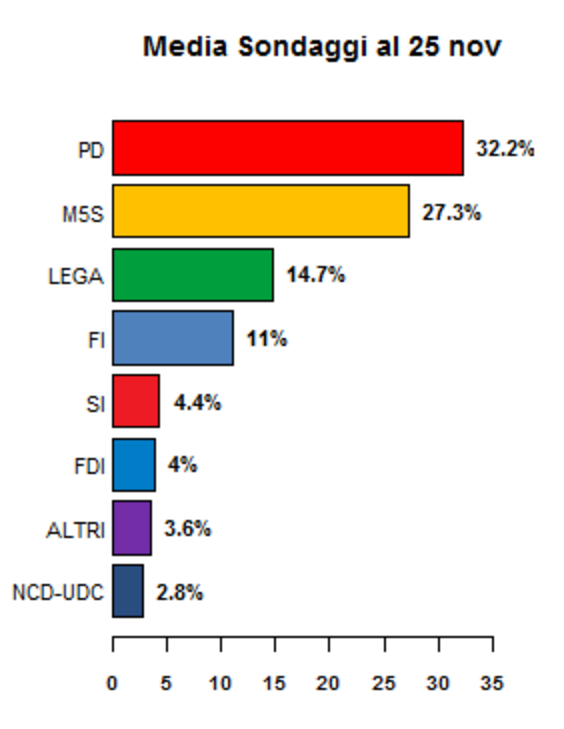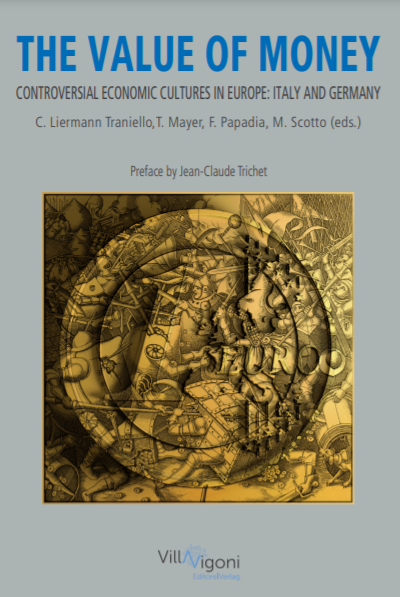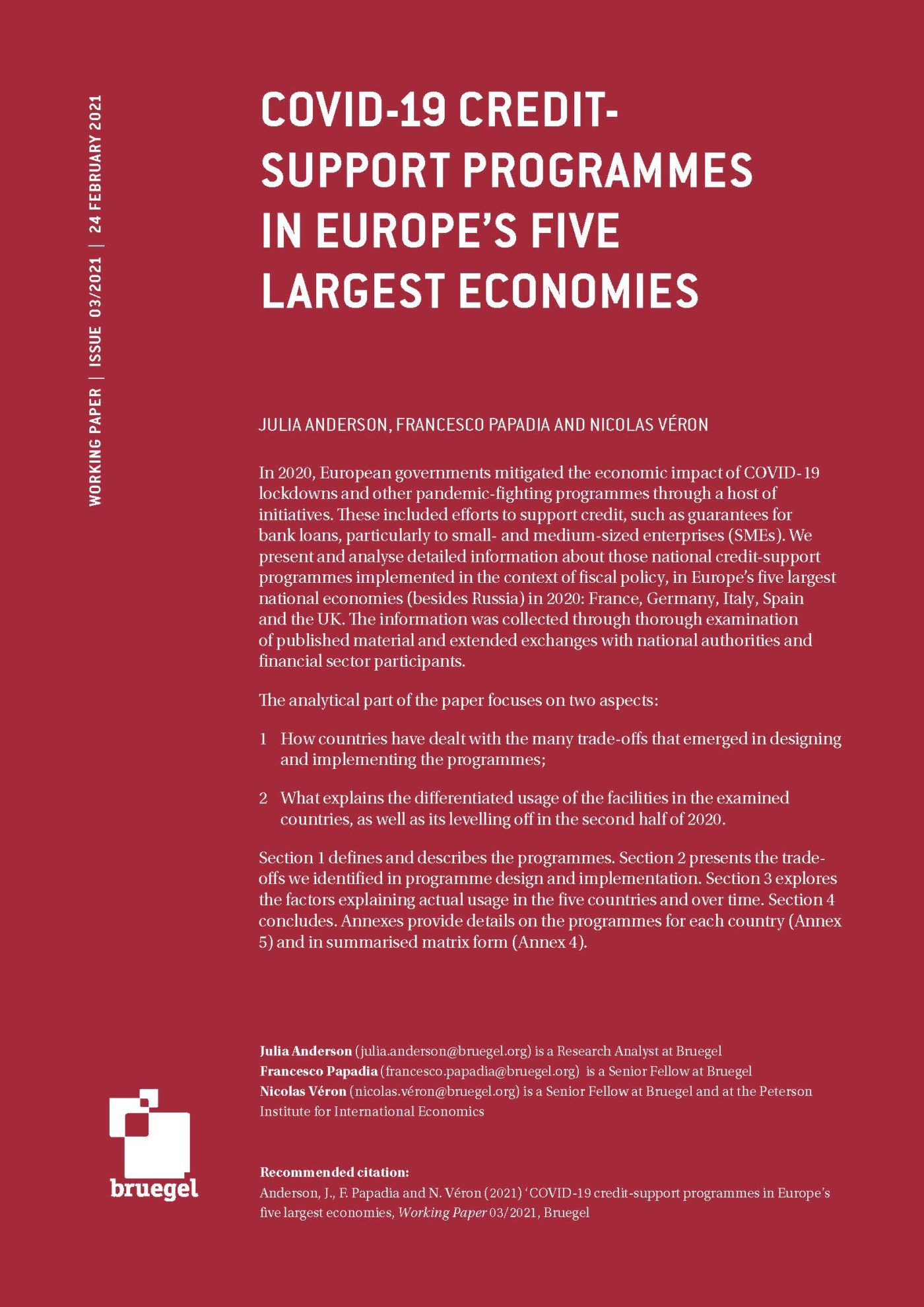Blog Post
Italian institutional reforms: will this time be different?
The government of Matteo Renzi wants to reform the law for electing the national parliament. It also wants to change the role of the upper house, the Senate, with a view to move towards an unicameral system. Will these reforms work? How important are they going to be for Italy and Europe?
The government of Matteo Renzi took office in February 2014 with an ambitious programme of institutional reforms. The first concerned the system for electing the national parliament. The previous electoral rules had failed to produce a clear winner in the changed political conditions of the 2013 national elections. Moreover, a reform was made necessary by a December 2013 Constitutional Court ruling, which had declared several features of the previous electoral law unconstitutional. This had left the country without a properly functioning electoral system.
The second main reform concerned the role of the upper house, the Senate. Italy is one of the very few remaining parliamentary systems in the world that still adopts a perfect bicameral system. A confidence vote from both the lower and the upper house is needed for the executive to govern, and both houses need to approve any new legislation. Of course this slows the passing of new laws and more generally the government’s ability to act. However, one specific problem is that for constitutional reasons the Senate and the House of Representatives have always had slightly different electoral rules and slightly different electorates. This means that elections often do not produce homogeneous political majorities in the two houses – including those in 2013. A reform towards a unicameral system, transforming the upper house into a Senate representing territorial governments and with limited legislative powers, has long been advocated in the Italian political debate. Nevertheless, the large parliamentary majority necessary for approving a constitutional reform has never been found[1].
In just eighteen months, and in spite of a very shaky majority in the upper house, the Renzi government has accomplished most of this institutional programme. A new electoral rule, entering into force in June 2016, was approved in May 2015 (L.52/2015); and the constitutional reform, transforming the Senate into a regional chamber with limited powers, received a third positive reading by the upper house in October 2015[2]. A final reading by the House of Representatives, where the Renzi government holds a large majority, and a national referendum, are the two remaining steps in order to definitely approve the constitutional reform. Expectations are positive on both sides. Note that the two reforms are also intimately connected; the new law only changes the electoral rule for the House of Representatives under the assumption that the constitutional reform will be approved, making a confidence vote from the Senate unnecessary for future governments to rule. This is also the reason why the new electoral rule comes into force only in June 2016, after the legislative process for reforming the Constitution will presumably be completed[3].
Previous reforms
Will these reforms work? How important are they going to be for Italy and Europe? Possibly.
The Italian political system has long been characterised by several structural problems. These have, if anything, become more severe in recent years, with the weakening role of the traditional political parties and the emergence of new political movements. To summarise the main difficulties, there is first of all a problem of instability. Italian governments since World War II have on average lasted no more than 10 months, making it difficult for the country to follow a coherent multi-annual programme of reforms. This has also made Italy an unreliable partner in European bargaining relationships, with continuously rotating ministers and top administrative staff. Secondly, there is a major fragmentation of the political landscape, with a large number of heterogeneous political parties being represented in Parliament, usually unable to form durable government coalitions and often leading to gridlock in political activity. In this context, small and often extreme political parties have ended up by receiving a disproportional weight in the development of policies. The new electoral rules and the constitutional reform will possibly be able to address these long-term problems.
But before explaining how, it is worth noticing that this is not the first time that Italy has tried to solve its political problems by changing its electoral rules. Electoral systems are generally very stable institutions in existing democratic systems, and are only rarely modified[4]. Italy has already changed its electoral rules twice in less than 15 years, first in 1993 and then in 2005, and it is now reforming it again. In particular, after the turmoil of the early 1990s[5], the 1993 reforms moved from a purely proportional electoral system to a mixed electoral one. 75% of parliamentary seats were assigned through a plurality rule in single candidate districts and the rest by proportional voting. It is interesting to note that, while there was at the time a lively debate on many specific features on the reform, most commentators agreed upon what would be the main effects. In particular, expectations were that the majoritarian prize in the single district would have forced many parties to merge together, eliminating the smaller ones from the political arena, and that the stability of governments and legislatures would have increased as the political cost for parties to dissolve pre-electoral coalitions (once they were formed) would also have increased.
It did not work. In Bordignon and Monticini (2012) we perform an econometric analysis to test whether the 1993 reform introduced a discontinuity in several selected political indicators, by comparing the 11 general elections under proportional rule from 1948 to 1992, with the 3 elections with the mixed system in 1994-2001. Table 1 summarises our main results, by presenting in the first column the average estimated values during the proportional period and in the second column, the effect of the majoritarian reform on these same values, with the associated statistical significance level.
Table 1 – The effect of the 1993 reform on selected political indicators
Source: Bordignon and Monticini, 2012.
As shown in the table, expectations turned out to be completely wrong. The refroms had no significant effect on the number of political parties in Parliament, the duration of government or the duration of legislatures. On the contrary, there was a significant effect on the number of seats assigned to the government parliamentary majorities (which decreased) and on the number of parties inside the governing coalitions (which increased). Thus, somewhat paradoxically with respect to expectations, the reform had the effect of weakening governing coalitions by reducing the number of seats attributed to their parliamentary majority, and by increasing the number of parties inside each winning coalition.
How was it possible, given that the new electoral rule was unanimously expected to produce exactly the opposite results? What happened is that small parties managed to survive and indeed flourish under the new system by credibly threatening the bigger parties and forcing them into large pre-electoral alliances. In single seat districts, small parties could not possible win. But by running alone, they could induce the defeat of the ideologically closer larger party, by depriving the latter of the marginal votes needed to compete for the seat. Hence, larger parties were forced to find alliances with smaller ones, guarantying them “safe seats” in single districts and a large role in the governing executive. The result was heterogeneous coalitions and often gridlock in policies. The subsequent 2005 reform[6], which eliminated the single member districts and reintroduced a proportional electoral rule with a bonus in terms of seats for the winning coalitions, made things even worse. It produced large coalitions set up to win the elections but then unable to govern once elected, because they were too internally heterogeneous[7].
Why should this time be different?
Faced with this evidence, one might then wonder why the new electoral rule, which will still be based on a proportional system with a bonus in terms of seats for the winning list[8], should be able to produce a different outcome. There are a few reasons.
First, in the normal case, (ie when no single list obtains more than 40% of votes at the first ballot), the new law introduces a runoff among the two most voted lists to determine the winner. Second, the bonus assigns 54% of the seats to the winning list, not to the winning coalition of parties. And thirdly, because, as said before, the electoral reform is this time accompanied by the simultaneous elimination of the perfect bicameral system – the new Senate has much reduced powers, and governments no longer need its vote in order to rule.
All these elements might play an important role. The presence of a bonus either at the first (for the list that gets at least 40% of votes) or at a second ballot, guarantees that a clear winner emerges in all cases (it is a “majority assuring” system, in the words of Robert D’Alimonte, the government’s main political consultant for this reform). The fact that the bonus is now given to the winning list (possibly a single political party) and not to the coalition, should make the government majority more homogeneous and more stable. This point is further strengthened by the disappearance of the Senate – and its often incongruent political majority – as a key player. And finally, there are expectations that the runoff should reduce the influence of small (and often extreme) parties on policy.
Notice that there is some supportive empirical evidence for this last prediction. The new national electoral system, in fact, is quite similar to the one in use since 1993 for local governments, in particular for municipalities (which is why the new system is often called “Italicum” in the press)[9]. In the case of cities, the electoral system is also proportional with a bonus for the lists supporting the winning candidate for mayor. Moreover, even for municipalities, a runoff is used for cities above 15 000 inhabitants, whenever no candidate gets more than 50% of votes at the first ballot. For cities below the 15 000 inhabitants threshold, instead, the mayor is elected with a single ballot under a plurality rule (first pass the post).
Bordignon et al. (2013)[10] argue that the presence of the runoff should lead to a lower influence of smaller parties on policies, and test this by comparing cities just above and below the 15 000 threshold (that is, municipalities in between the interval of 10-20 thousand inhabitants). The argument is based on the idea that, in systems with a runoff, a substantial number of people who voted for losers in the first round should nevertheless turn out at the second ballot. Only this second round matters for the final outcome, thus reducing the bargaining power of the smaller parties in pre-electoral consultations. And indeed, as shown in figure 1, when we look at the experience of cities where candidates went through a runoff process, this is what seems to be happening in the Italian context. Votes for losers are substantial in the first round (x-axis), about 30% on average, but the drop in participation at the second ballot (y-axis) is much lower, about 15% on average, meaning that approximately 50% of voters for losers do turn out at the final ballot.
Figure 1 – The turnout of voters at the second ballot in municipal elections, 1993-2010.
Source: Bordignon et al., 2015.
Concerning policy, Bordignon et al. (2013) use the variance of the municipal business property tax as a proxy for moderation in policy. This is a highly politically-charged policy, where extreme left and right wing groups typically want a very high or low business tax rate respectively. If municipal governments are more moderate above the threshold because smaller and generally more extreme parties are less important, as the theory predicts, there should be less variation in the business property tax. And this is exactly what we find using a regression discontinuity design around the threshold. As shown in figure 2, the drop in the variance of the business property tax at the threshold is substantial and highly statistical significant, both with and without several controls[11].
Figure 2 – The variance of the property business tax around the 15,000 inhabitants threshold.
Source: Bordignon et al., 2015.
Devils in the detail
Hence, there are several arguments to suggest that this time might indeed be different. But, as always, the devil is in the detail. As the experience of the 1993 reform shows, one should never underestimate the ability of Italian parties and politicians to circumvent even the better designed reforms. First, a single list does not necessary mean a single political party, although this might happen and this is indeed in the new law’s intention. Maybe different parties will join in a single list to run at the elections in order to compete for the bonus, and then divide again into different parliamentary groups after the elections. Unfortunately, this is an issue that cannot be regulated by law. This possibility depends entirely on parliamentary regulations, which it is up to the Parliament itself to define. Of course, running in a single list for different parties is costly, as it would mean losing visibility in front of their voters and being unable even to count them for each single component, but it could very well happen.
Second, and most worryingly, the outcome might be entirely different than the one predicted in Bordignon et al. (2013), that more centrist policy will be the result of the runoff. This outcome was predicted on the “normal” political landscape that prevailed in Italy in the 1990s and 2000s. In this framework, the main cleavage across voters was along the traditional left-right dimension, with two large moderate parties on both sides (Forza Italia and PD, the Democratic party) and several smaller parties both at the center and at the extremes. However, as a result of the deep economic crisis since 2009 and the inability of the different governments to cope with it, the political landscape in Italy has dramatically changed in recent years. A second cleavage has emerged, between voters who are pro-Euro and pro-Europe and voters who are against the Euro and against Europe. For example, according to the last Eurobarometer (2015), only slightly more than 55% of Italians would now support the statement “I am in favour of an European monetary and economic union, with one single currency, the Euro”. More than 75% agreed before the crisis. Many voters, particularly young ones, have also become strongly “anti-system”, meaning that they are unwilling to vote for any of the traditional parties, accused to be deeply corrupted and self-serving. As a result, an extreme anti-systemic and anti-European party (the 5 Star Movement), with undefined positions on the traditional left to right dimension, has emerged. This is now stably in second place (see figure 3 for an average of the latest surveys), not very far from the front runner, the PD.
Figure 3 – Average of electoral surveys in the week preceding the 11th of November 2015.
Source: Termometro Politico, www.termometropolitico.it
Assuming that these surveys effectively measure citizens’ preferences at the next elections, then the 5 Star Movement is at the moment the most likely party to reach a runoff with the PD, the Prime Minister’s party. In this situation, the logic of the runoff might work in the opposite direction than in the case described in Bordignon et al. (2013). The runoff might give an extreme party, the 5 Star Movement, an opportunity to win the elections, that it would not otherwise have (being anti-system, the 5 Star Movement cannot ally with any other party and it is presumably not strong enough to win the elections alone). At the moment, this still looks unlikely, as the anti-systemic, anti-euro voters are divided along many other dimensions and might then not converge on a 5 Star Movement list at the second ballot.
But things may change. A lot will depend on how economic conditions turn out in the forthcoming years before the next political elections[12]. At the moment, 80% of Italians still perceive the economic situation as being “very bad” (Eurobarometer, 2015) and although the economic parameters are slowly improving, it is not clear that would be enough to return to the “normal” case on political grounds. This is also probably the reason why there is so much pressure on the present government to improve economic conditions in the short run, at the risk of jeopardising the long-term process of fiscal adjustment (see Bordignon, 2015).
Concluding remarks
In conclusion, assuming that expectations are fulfilled and the new Constitution is approved at the referendum, the present package of reforms has several elements that might induce one to believe that this time it might be able to reach its objectives. The new electoral system will certainly produce a winner, and this winner will have the opportunity to act more freely than in the past, because of the simplification in the legislative process from the de facto elimination of the second house[13]. The new electoral law should also generate more cohesive and more stable majorities, but the jury is still out on this effect. A lot will depend on the reaction of parties and voters to the new electoral system. Finally, in the political landscape of pre-crisis Italy, there could have been an expectation that the introduction of the runoff would also have produced more centrist policies. In the new political situation, characterised by the presence of a large extreme party, the effect might end up to be just the opposite.
References
Bordignon M, 2015, “Renzi’s risky budget strategy” Blog Post, Bruegel , 21 October.
Bordignon M. and Monticini A., 2012. “The importance of the electoral rule: evidence from Italy”, Economic letters, 117, 322-25.
Bordignon M., Nannicini T, and Tabellini G., 2013, “Moderating political extremism. Single rounds versus Runoff under plurality rule”, IZA DP Working Paper, n.7561.
Ceccante S, 2015 “Italicum e riforma costituzionale” Il Mulino, 3, p.427-433
D’Alimonte R., 2015 “The new Italian electoral system: majority assuring but minority friendly” Contemporary Italian Politics, Vol. 7, p. 286-92
Eurobarometer, 1, October 2015, European Commission.
Fasano L. & Natale P., 2015 “Italicum, molto rumore per nulla” Il Mulino 4, p.640-648
Persson, T. and Tabellini G., 2003, The economic effects of Constitutions, MIT UP.
Shugart, M.S., and Wattenberg M.P., (Eds.) 2001, Mixed-members electoral system; the best of both worlds? Oxford, UP.
[1] To be more precise, a more general Constitutional reform also modifying the role of Senate was approved in 2005, but was rejected by a national referendum in 2006.
[2] Rules for constitutional amendments in Italy are very complex. They involve both supermajority in each house and then several subsequent readings by the two houses with some compulsory time interval between them. Plus, in most cases, the new test need to be approved by a national referendum.
[3] The national referendum will probably take place in Autumn 2016.
[4] In the sample of sixty democracies studied by Tabellini and Persson (2003), only two had significant electoral reforms in the previous 30 years, France and Cyprus.
[5] For a detailed story of the genesis of the 1993 reform, see the chapters by R. D’Alimonte and by R. Katz on the Italian case in Shugart and Wattenberg (2001).
[6] Approved with only the votes of then center-right majority in Parliament.
[7] It is worth recalling that the second Prodi government, that took power after winning the national elections in 2006, had 14 different parties in its supporting coalition. Predictably, the government managed to do very little and only lasted for slightly more than one year, leading to new elections in 2008.
[8] See D’Alimonte (2015) for greater details and for an explanation of the genesis of the reform, as the result of a difficult compromise between the two larger parties in Parliament, FI and PD. The new electoral rule has many other features, such as the selection of candidates or the resulting balance of power between majority and opposition that have raised several criticisms by both academics and opposition politicians (see the references at the end of this paper for a sample). For the sake of brevity, I skip here entirely the discussion of these elements.
[9] The main difference is that at the municipal level the system is semi-presidential (the Mayor is elected directly by citizens), while at national level it would remain parliamentary.
[10] See the web pages of the authors for more recent versions of this paper.
[11] In figure 2, the first chart presents the business property tax variance across time for the same municipalities, the second the cross section variance across municipalities of similar size just above and below the threshold. The threshold is normalized to zero in the figure, and each point represents approximately the average of 100 municipalities. The blue line represents the point estimation and the green lines confidence interval at 95% probability level. See Bordignon et al., (2013) for more details.
[12] The next elections should take place in 2018, but many believe that the current Prime Minister will try to anticipate them to the Spring of 2017, after the national referendum on the constitutional reform.
[13]The new Senate can ask to examine all legislative proposals (in a very limited time span) of the House of representatives, but the latter is not under obligation to take into account Senate amendments. Only on small set of matters that more directly affect sub-national governments, the Senate has a larger role, in the sense that its scrutiny is compulsory, but the House of Representatives is still the one which takes the final decision.
Republishing and referencing
Bruegel considers itself a public good and takes no institutional standpoint. Anyone is free to republish and/or quote this post without prior consent. Please provide a full reference, clearly stating Bruegel and the relevant author as the source, and include a prominent hyperlink to the original post.

